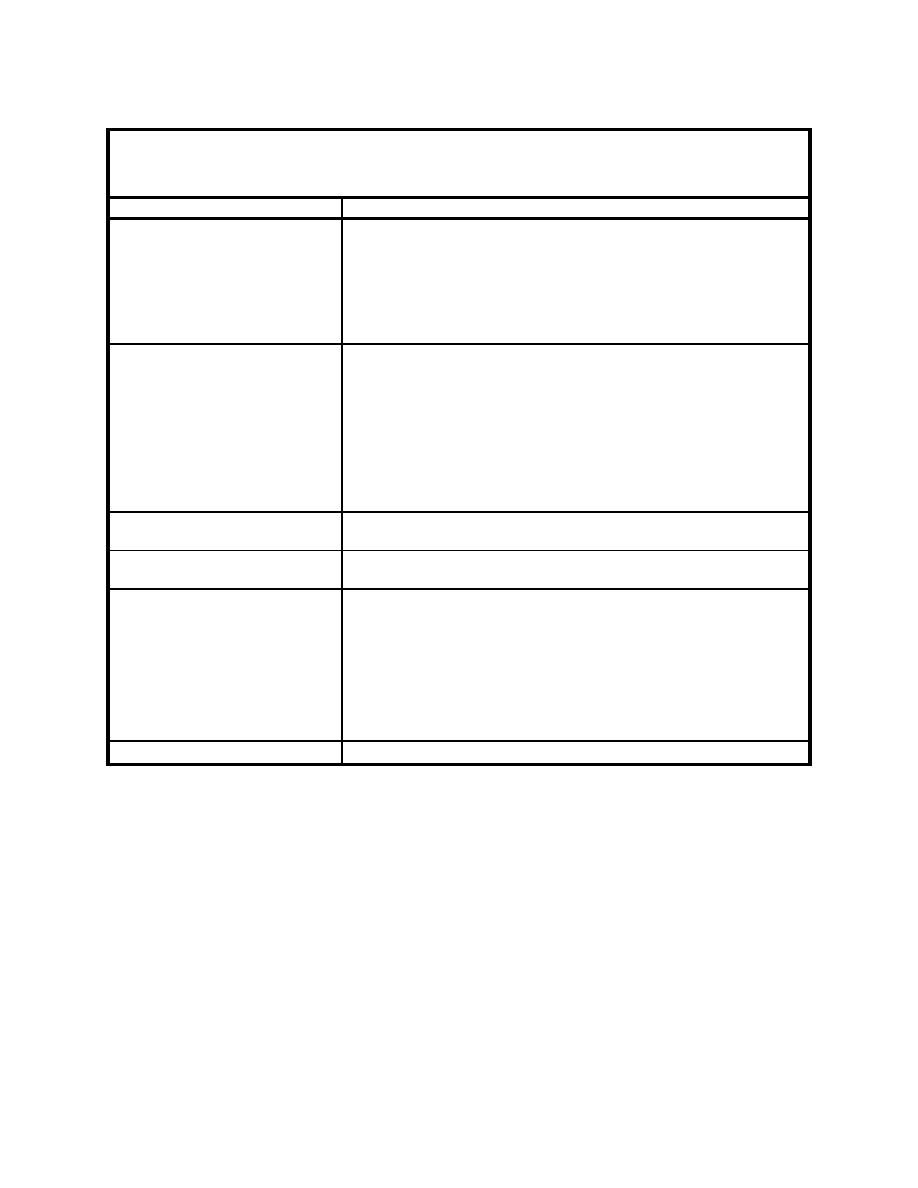 |
||
|
|
||
|
Page Title:
Table 1. Information Used to Demonstrate Conformance with Performance Standards for CDF Liners |
||
| |||||||||||||||
|
|
 ERDC TN-DOER-R6
December 2004
Table 1
Information Used to Demonstrate Conformance with Performance Standards for CDF
Liners
Information
Typical Parameters
Description of Liner System
Description of:
Material type and source
Thickness
Hydraulic conductivity
Recompacting and amendment requirements
Location of borrow area and any amendments
Material Testing Data
Test results for:
Index tests
Hydraulic conductivity
Strength, puncture resistance, etc.
Consolidation
Shrink-swell properties
Potential for dispersion/piping of dredged material due to liquid flow
through liner
Liner Compatibility Data
Results of hydraulic conductivity testing of liner material with representative
leachate
Liner Thickness
Demonstration that the liner system thickness is sufficient to retard liquid
flow-through during operating life and post-closure period
Construction Specifications
Procedures for liner installation, including:
Method of compaction
Degree of compaction; water content to be achieved
Lift thickness
Methods to alter water content
Scarification requirement between lifts
Method of amending soil or dredged material, if applicable
Construction Quality Assurance
Description of quality assurance program and testing procedures
Compacted Subsoil. CDFs will normally be constructed near or within water bodies in an effort to
reduce dredged material transportation distance. Siting in the vicinity of water bodies further offers a
potential advantage in that many candidate sites possess naturally occurring low-permeability materials
due to the depositional environment of rivers, lakes, and harbors. For example, in areas dominated by
sluggish streams and rivers, alluvium typically consists of clayey silt (Rahn 1986), where the reduced
flow velocities restrict the bed load of the stream to the finest fractions. Similarly, during high flow rates,
overbank flooding may occur, allowing for deposition of silt, silty clays, and clays in the floodplains.
Oxbow lakes, formed from meander cutoffs characteristic of the lower Mississippi River Valley, often fill
with fine-grained clays. Relatively thin clayey lacustrine deposits are often associated with areas of the
Great Lakes, while marine clay deposits are common in many coastal areas such as Boston (Rahn 1986).
Low-permeability materials that may be considered potential liner element candidates are identified in
Table 2 as those possessing permeabilities of 10-6 cm/s or below. Qian (1995) notes that in most cases the
hydraulic conductivity must be less than or equal to 10-7 cm/s for soil liners. In some cases (e.g., a lightly
contaminated dredged material), materials possessing slightly higher hydraulic conductivities may be
9
|
|
Privacy Statement - Press Release - Copyright Information. - Contact Us - Support Integrated Publishing |